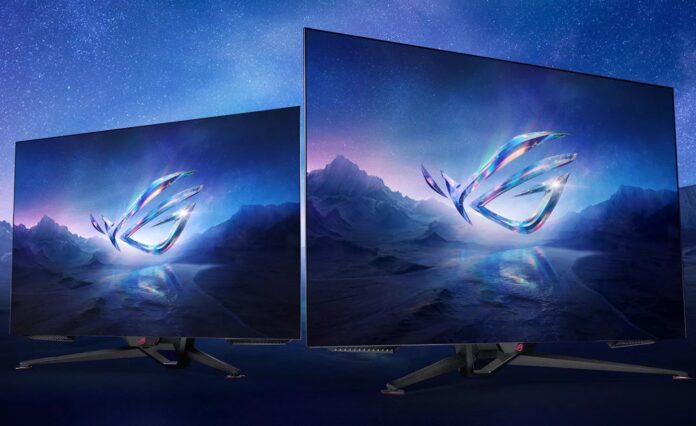In today’s digital age, LCD (a.k.a. Liquid Crystal Display) screens are ubiquitous, serving as the interface between humans and the electronic devices we rely on daily, ranging from our TVs to our small appliances.
From smartphones and tablets to computer monitors and small appliances’ displays, LCD screens have become an integral part of our lives.
LCD technology has been in use for decades and it continues to keep up with the latest trends in the market so as not to become obsolete.
At the onset of their production, LCD screens were primarily used for television devices, but nowadays, their use is diverse, as you can see from the examples stated above.
Naturally, as LCD technology develops, more varieties become available and the consumer has many alternatives to choose from.
When it comes to LCD displays, there are two primary options to consider: standard displays and custom displays.
In this article, we will explore the key differences between standard and custom LCD displays and help you make an informed choice for your specific needs.
Standard LCD Displays

Standard LCD displays, as the name suggests, are mass-produced and readily available in the market.
These displays are manufactured in large quantities, often by well-established companies and manufacturers, making them easily accessible and cost-effective.
Here are some factors to consider when evaluating standard LCD displays:
Cost-Efficiency: Standard LCD displays are generally more budget-friendly than custom options. The mass production of these screens leads to economies of scale, resulting in lower per-unit costs. This makes them an attractive choice for manufacturers looking to keep production costs down. If you’re operating on a low or limited budget, then maybe a standard screen might be a better and more affordable alternative.
Availability: As they are produced in large quantities, standard displays are, of course, available in various sizes and specifications. Whether you need a small screen for a portable device or a large one for a high-definition television, you can usually find a standard display that suits your requirements without long lead times, especially if you’re not in need of a specific display size and can be flexible with your choice.
Simple integration: Manufacturers often design their products with standard LCD displays in mind. As a result, integrating these displays into your device can be relatively straightforward, as there are established interfaces and mounting options, meaning you won’t have to bring in an expert or waste time finding someone to adjust your display.
Proven technology: Standard LCD displays have a track record of reliability and performance, because they’re so widespread and manufacturers have had a lot of time to fix the most commonly reported issues. They undergo rigorous testing and quality control during manufacturing, thus reducing the risk of defects and ensuring consistent performance.
Therefore, standard LCD displays are a practical and cost-efficient choice when you’re on a tight budget and not in need of specific display dimensions.
Custom LCD Displays

While standard LCD displays offer several advantages, custom LCD displays are tailored to meet specific requirements and are a great choice for when you have a very specific application in mind.
These displays are designed and manufactured to match unique specifications, whether it’s for your business or personal use.
If you’re in need of a custom LCD display, here’s what you should take into consideration when discussing the design with your chosen manufacturer:
Tailored to your needs: Custom LCD displays are designed from the ground up to meet your precise requirements. This level of customization allows for unique screen sizes, shapes, resolutions, and functionalities that may not be achievable with standard displays. All you have to make sure is to come with prepared specifications and consult with your manufacturer to see whether your vision is realistic.
Enhanced performance: Custom displays can be optimized for specific applications, ensuring superior performance. Whether you need a high-brightness screen for outdoor use, a ruggedized display for industrial environments, or a high-resolution display for medical imaging, custom LCDs can be engineered to excel in your intended environment.
Brand differentiation: Custom LCD displays can help your product stand out in a crowded market. The ability to offer a unique visual experience can give your device a competitive edge and enhance brand recognition. Instead of the standard display we’re all used to seeing, you can make your appliance stand out and draw attention if that’s your ultimate goal.
Long-term supply: If your product has a long lifecycle or requires consistent availability of specific components, custom displays can ensure a stable supply chain. This is particularly important for industries where product support and maintenance are critical.
Making the Right Choice

Choosing between standard and custom LCD displays ultimately depends on your specific needs and priorities.
Once you’ve taken everything from the above into consideration, you’ll be one step closer to deciding on your LCD display. Also, there are several other points to cover, such as:
Application: Consider the intended application of your device. If you’re focused on developing a consumer product with standard requirements, a standard LCD display may be cost-effective and readily available. However, if your application demands unique features or performance characteristics, custom displays may be the way to go.
Budget plan: Assess your budget constraints, as this will probably be one of the crucial factors. Standard displays are generally more affordable upfront, but custom displays can provide long-term value by meeting your exact requirements and reducing the risk of redesigns or compatibility issues. It will all boil down to what you’re looking for—a short-term affordable solution or a long-term appliance that’ll be tailored to your specific needs.
Time constraints: Take into account your project timeline. Standard displays are readily available, which can speed up product development. Custom displays, on the other hand, may require more time for design, development, and manufacturing, but the efforts and patience does pay off in the end.
Volume: Consider the expected production volume of your device. If you anticipate a high volume of units, standard displays may be cost-effective due to economies of scale. Custom displays may be more suitable for low-volume or specialized applications.
Environmental factors: Evaluate the operating environment of your device. Custom displays can be engineered to withstand extreme conditions such as temperature variations, moisture, and impact, making them suitable for rugged or outdoor applications.
Brand identity: Think about the importance of brand identity and product differentiation. Custom displays can help create a unique visual experience that sets your product apart from competitors.
The bottom line

In the realm of LCD displays, the choice between standard and custom options boils down to your specific needs and priorities. Standard displays offer cost-efficiency and availability, making them suitable for many consumer applications.
On the other hand, custom displays provide unparalleled customization, enhanced performance, and brand differentiation, making them ideal for specialized and demanding applications.
Ultimately, the decision should align with your project’s goals, budget, timeline, and the unique requirements of your device.
Whichever path you choose, LCD displays will continue to play a pivotal role in shaping our digital interactions and the future of technology.








